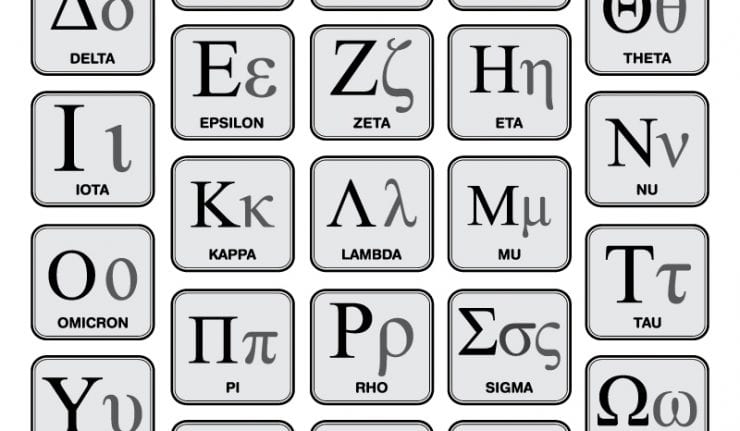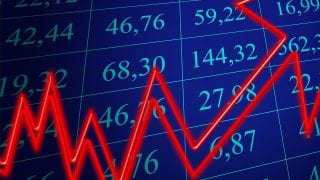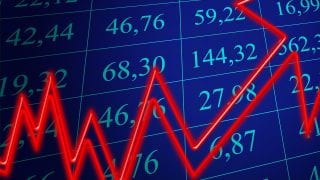The option Greeks provide a way to measure the change in the price of an option when affected by certain factors.
By reading this article, investors will gain a better understanding of each of the option Greeks and how the price of an option comes to be. This tool can be used to make better decisions about which options to trade, and when to trade them.
The four key Greeks that will be focused on in this article are: Delta, Gamma, Theta, and Vega.
Delta is an estimate of how much an option’s price may change with a $1 change in the underlying security’s price.
The Delta value can be either positive or negative depending on the type of option. For call options, it always ranges from 0 to 1. For put options, it always ranges from -1 to 0.
For example, if a call option has a Delta of .50, and the underlying stock increases in price by $1 per share, then the option price will increase by $0.50 per share. If a put option has a Delta that is -.50, and the underlying stock increases in price by $1 per share, then the option price will decrease by $0.50 per share.
Another thing to note about Delta is that its behavior depends on whether an option is “in-the-money,” “at-the-money,” or “out-of-the-money.”
The more “in-the-money” the option is as it approaches its expiration, the closer the Delta value is to 1 or -1 (depending on if it is a call or put option). “At-the-money” options typically have a Delta value of .50 or -.50. “Out-of-the-money” options that approach expiration have a Delta value that gets closer to 0.
Gamma indicates how much the Delta will change given a $1 change in the underlying security. As mentioned earlier, Delta shows how a $1 change in the underlying security affects the option’s price. The Gamma is used to show how the Delta might change with that same $1 move.
For example, assume Stock ABC has a value of $30. An ABC call option has a Delta of .40 and is priced at $2. The stock value increases to $31. The option price increases to $2.40. Now that the option has a new price, the Delta value changes. If the Gamma of this call option is .08, then it can be expected that the Delta on the new option price will be .48. The change in the Delta value is the Gamma.
Another thing to note is that Gamma approaches zero when the option that is being measured is deep “in-the-money” or deep “out-of-the-money.” Gamma is at its highest when the option that is being measured is near or “at-the-money.”
A high Gamma value indicates a higher risk in the option. Options that are “at-the-money” are unpredictable as they have a similar chance of expiring “in-the-money” as they do “out-of-the-money.” A low Gamma value indicates a lower risk. Options that are far “in-the-money” or far “out-of-the-money” are more predictable and will most likely expire where they are at.
Theta represents how much an option’s price will decline due to the passage of time.
The value of an option is made up of intrinsic plus extrinsic value. Intrinsic value is the difference between the strike price and market price of the underlying security, when the option is “in-the-money.” Extrinsic value is made up of the time value and implied volatility of an option. Theta focuses on time value and assumes implied volatility remains constant.
As time approaches expiration on an option, that option’s extrinsic value decreases. Theta is a measure of how much that extrinsic value is decreasing as the option approaches expiration.
For example, assume an investor owns a put option for Stock ABC with a strike price of $20. ABC’s market price is $25. The option’s price was $2 and it expires in ten days. This option has no intrinsic value since it is not “in-the-money.” Its value is coming from its extrinsic value. As the option approaches its expiration, its extrinsic value will decrease. Theta will tell us by how much. Assume in this case, the Theta value is -.10. As the expiration date gets closer, the value of the option decreases by $0.10 per day. If eight days pass by, then the value of the option would decrease by $0.80. Now, the option’s price will be $1.20.
Vega represents the amount an option’s price will change with a 1% change in the implied volatility of the underlying security.
For example, assume Stock ABC is trading at $20. A call option has six months until expiration with an implied volatility of 15% and a Vega of .05. The option’s price is $1. With a Vega of .05, each 1% increase in implied volatility equals a $0.05 increase in the option’s price. If implied volatility rises from 15% to 20%, then the option’s price would be expected to rise by $0.25 (5 X .05 = .25). The new option price would be $1.25. If implied volatility decreases from 15% to 13%, then the option’s price would be expected to decrease by $0.10 (2 X .05 = .10). If this happened, the new option price would be $1.90.
Another thing to note, options that have a longer amount of time until expiration tend to have a higher Vega value than options that have a shorter amount of time until expiration. This is because longer-term options have a higher premium than shorter-term options. So, a 1% change in the implied volatility of the longer-term options will have a greater price change than a 1% change in the implied volatility of the shorter-term options.
After having read this article, an investor should have a better understanding of what the option Greeks mean and what they are used for. This new skill will be helpful in achieving options trading success.




